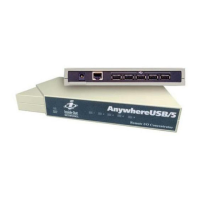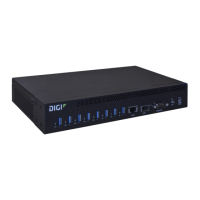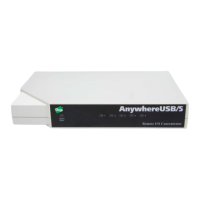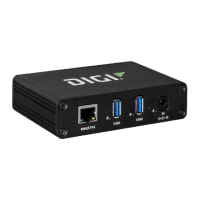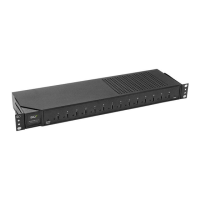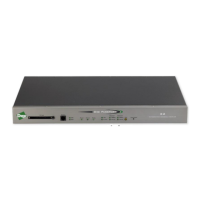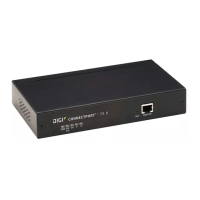Interfaces Wide Area Networks (WANs)
AnywhereUSB® Plus User Guide
121
10. For Add Test Target, click g.
11. Select the Test type:
n
Test another interface's status: Allows you to test another interface's status, to create
a failover or coupled relationship between interfaces. If Test another interface's
status is selected:
l
For Test Interface, select the alternate interface to be tested.
l
For IP version, select the alternate interface's IP version. This allows you to
determine the alternate interface's status for a particular IP version.
l
For Expected status, select whether the expected status of the alternate interface
is Up or Down. For example, if Expected status is set to Down, but the alternate
interface is determined to be up, then this test will fail.
n
Ping test: Tests connectivity by sending an ICMP echo request to the hostname or IP
address specified in Ping host. You can also optionally change the number of bytes in
the Ping payload size.
n
DNS test: Tests connectivity by sending a DNS query to the specified DNS server.
n
HTTP test: Tests connectivity by sending an HTTP or HTTPS GET request to the URL
specified in Web servers. The URL should take the format of http[s]://hostname/
[path].
n
Test DNS servers configured for this interface: Tests connectivity by sending a DNS
query to the DNS servers configured for this interface.
n
Test the interface status: The interface is considered to be down based on:
l
Down time: The amount of time that the interface can be down before this test is
considered to have failed.
Allowed values are any number of weeks, days, hours, minutes, or seconds, and
take the format number{w|d|h|m|s}.
For example, to set Down time to ten minutes, enter 10m or 600s.
The default is 60 seconds.
l
Initial connection time: The amount of time to wait for an initial connection to the
interface before this test is considered to have failed.
Allowed values are any number of weeks, days, hours, minutes, or seconds, and
take the format number{w|d|h|m|s}.
For example, to set Initial connection time to ten minutes, enter 10m or 600s.
The default is 60 seconds.
12. Optional active recovery configuration parameters:
a. If Reboot device is enabled, for Reboot fail count, type or select the number of times that
the Surelink test must fail before the device is rebooted. The default is 1.
b. Change the Interval between connectivity tests.
Allowed values are any number of weeks, days, hours, minutes, or seconds, and take the
format number{w|d|h|m|s}.
For example, to set Interval to ten minutes, enter 10m or 600s.
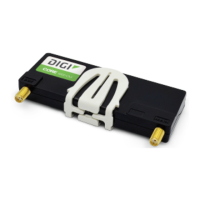
